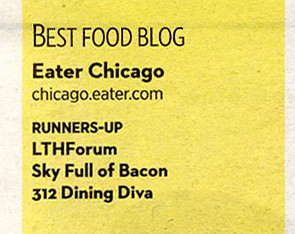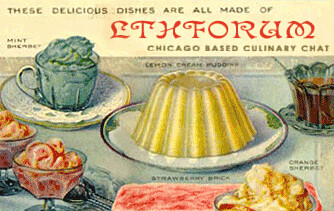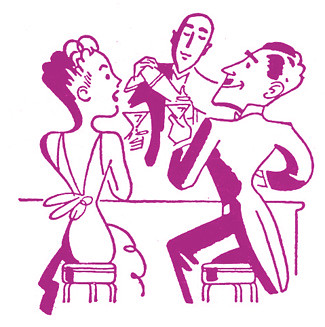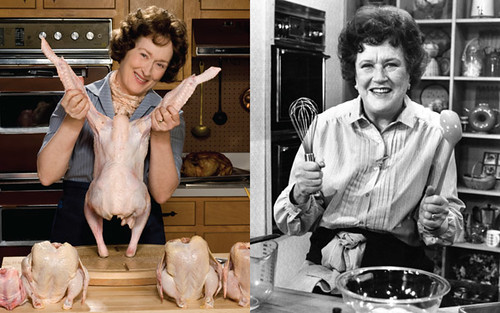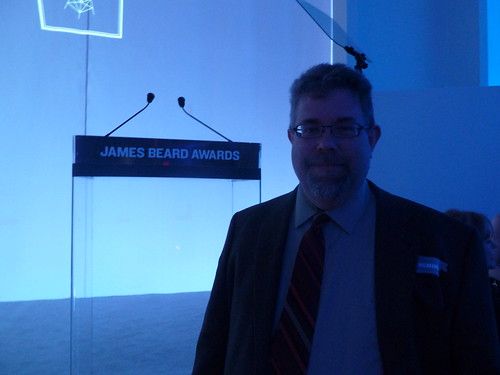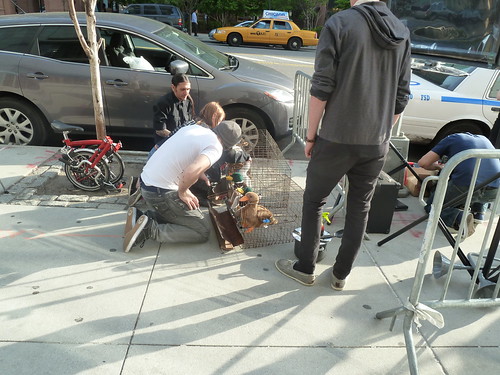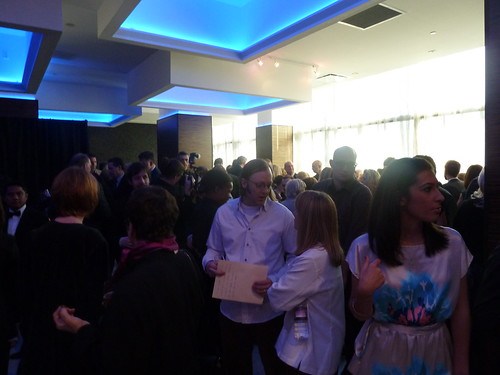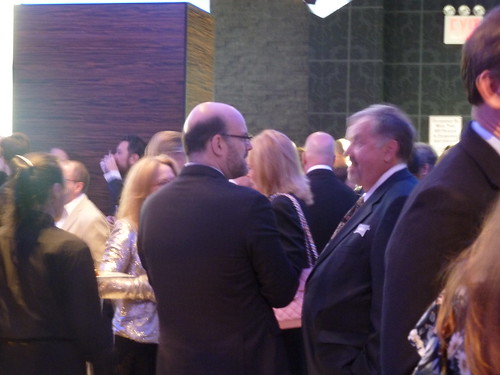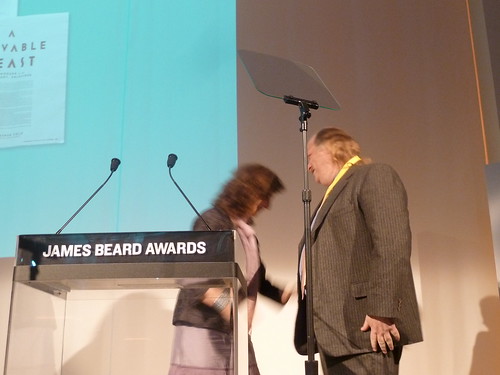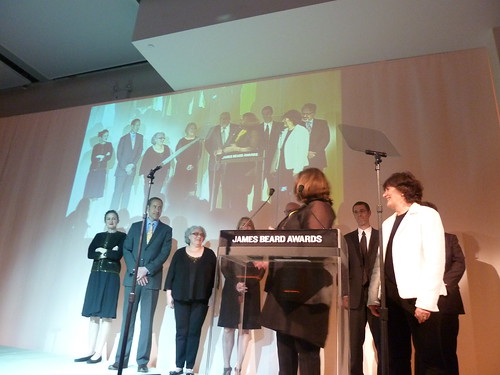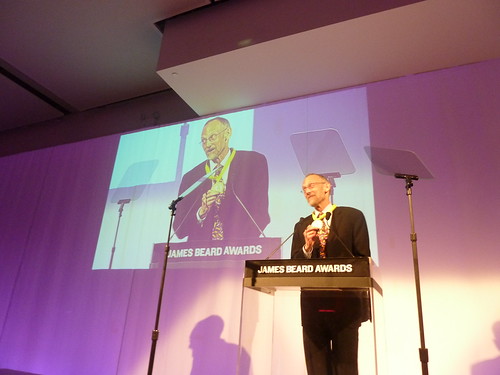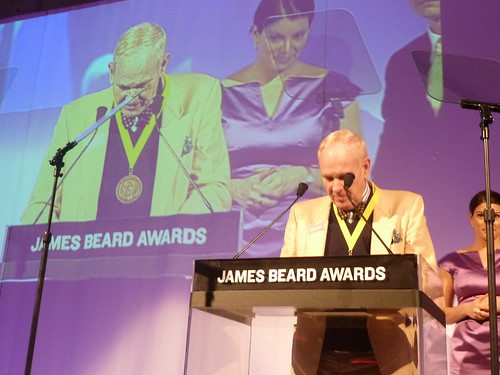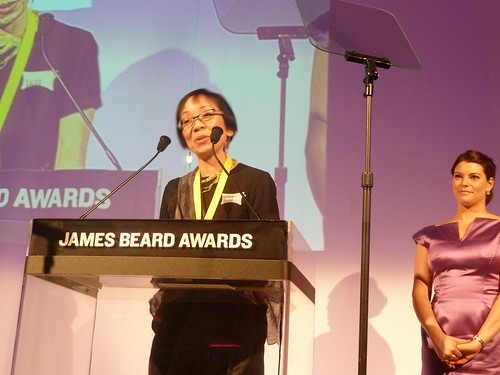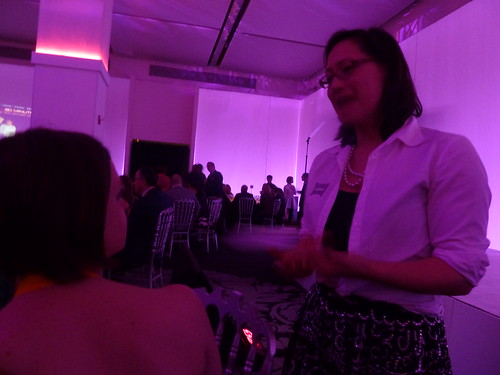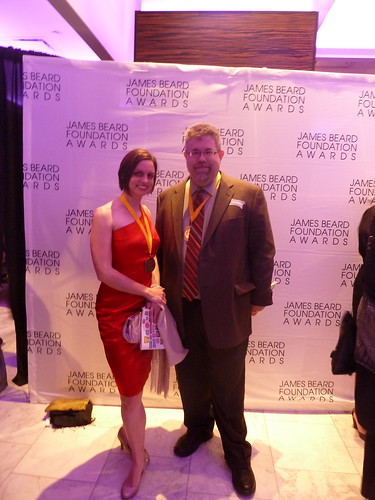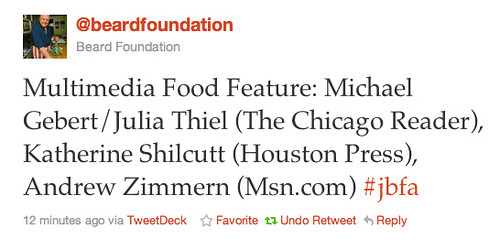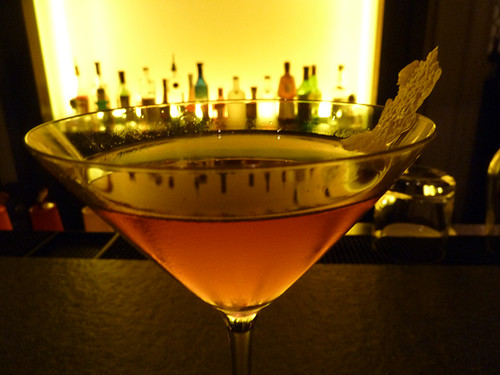
Library, The Public Hotel.
So Monday morning there will be an announcement which many have guessed, or simply assumed, to judge by the congratulations I’ve been getting since before it was official. I am taking the post of Chicago editor (which is to say, writer and editor of myself) for Grub Street Chicago. Which, if you don’t know, is a site which aggregates and creates foodie world news in several major foodie cities.
In doing so I’m going straight against what one of the best-known people on the Chicago food scene has just done:
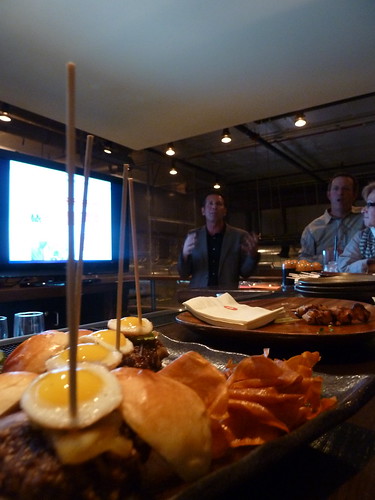
A couple of weeks ago I went to an announcement party at Union Sushi & Barbeque Bar for Steve Dolinsky’s new site, SteveDolinsky.com. Dolinsky, who is mainly known for his food segments for ABC 7 in Chicago, had (among his other gigs) been the food blogger at Vocalo, the bloggy offshoot of WBEZ which has now simply become WBEZ.org. He gave that up, and my friend Louisa Chu took it up:
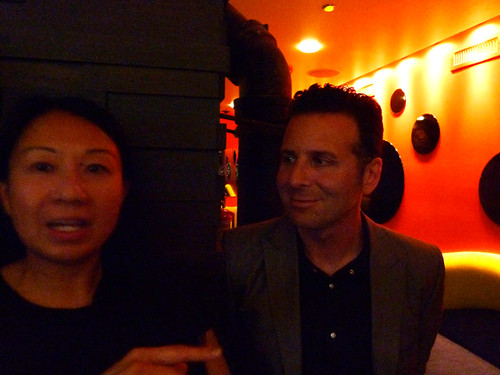
One of the reasons Dolinsky told me he had left WBEZ and spiffed up his own site (for which he plans to create an impressive amount of weekly content) was that frankly, he felt he should be building his own brand on the web, not somebody else’s. I agreed completely at the time, and still do in general— and the value of my own efforts at personal brandbuilding were quickly affirmed by the owner of the restaurant introducing himself and turning out to be a Twitter follower of mine. (Okay, he follows 2000 people, but he’d responded to me on occasion, and I recognized his Twitter name.)
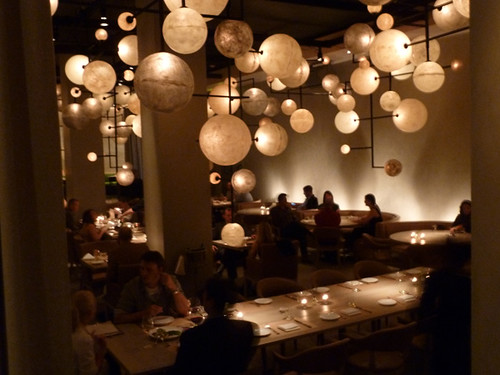
Afterwards, Louisa and I checked out the renovated Pump Room…

and the Library, which is a very nice, quiet bar, not at all overrun as I assumed this highly-hyped opening would be.
So why am I doing the opposite? Well, one, they’re paying me, and I really want to be able to afford to do things like go cool foreign places with my kids while they’re still young enough to tolerate me. (Happy 13th birthday, Myles.) As Mr. Mom/advertising freelancer/food writer person, I don’t exactly have the cares of someone depending wholly on their food freelance income, but I could certainly use an income. Two, although I have good access to the food scene and its notable figures, I’m sure just the needs of covering the scene will expose me to many more things much more rapidly. Three, I like the idea of being compelled to produce on a regular basis. To be forced to think up story ideas, day after day, to follow up leads right then. This is my training for the marathon, my fighting middle age contentment by taking on something new and demanding. Better to burn out than to fade away, and all that. So, I’ll be doing the grunt work of aggregating news from all over every day, but I’ll also be trying to produce original content just about every day, interviews and videos and slideshows and commentary. Bookmark it, if you haven’t already!
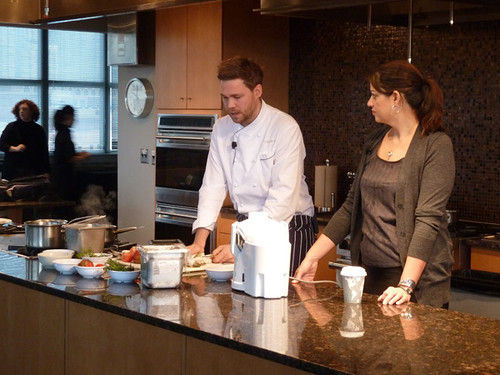
Marcus Jernmark and Chandra Ram at Plate Cooks.
Not that Dolinsky’s event is the only thing I’ve been to lately, but most of the others quickly got repurposed into material for Grub Street’s insatiable appetite. One was the industry how-to conference Plate Cooks, put on by Plate, a trade magazine based in Chicago whose editor Chandra Ram I’ve met on several occasions. Two different publicists invited me to events, one with Marcus Jernmark, of New York’s Aquavit, which used to be Marcus Samuelsson’s place. To be honest, I had never heard of him and barely of Aquavit, and I wasn’t sure what I was going to do with that here, but I had nothing else that morning and I figured, hey, I can attend a chef’s demo at Kendall, why not? Little did I know how grateful I’d be for this material the next week when I started filling in at Grub Street; you can see what I made of that here.
Another was a butchering demo with Rob Levitt and Michael Paley of Louisville’s Proof on Main; I’ve never made it to one of Rob’s butchering demos so it was a great chance to see one and share it, finishing the demo off with Paley’s coppa and fried pig tails:
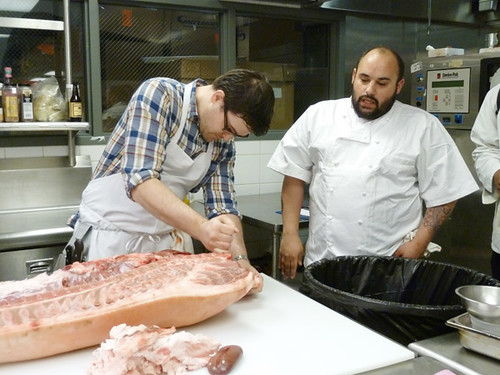

After that one I stuck around for the next, a panel about sustainability, which included Randy Zweiban and Ari Weinzweig, the co-founder of Zingerman’s in Ann Arbor, Michigan, which I had visited for the first time a few months back. I especially wanted to meet him… because I was already planning to have dinner with him that night. Anyway, Plate Cooks was a great industry event, strong on the technical side which I found fascinating, light on the showbizy-commercialized side even though it did have sponsored interludes (but even those, like Tony Priolo demoing risotto with potatoes in it, were perfectly respectable and worth attending). I’m definitely going to try to get invited again next year.

But wait, you were about to ask, how was I planning on having dinner with the co-founder of Zingerman’s again? Well, some months back the Wisconsin Milk Marketing Board, who invited Hammond and me on this, invited me to a bacon dinner at L’Etoile in Madison, part of the push around Weinzweig’s new book, Zingerman’s Guide to Better Bacon.
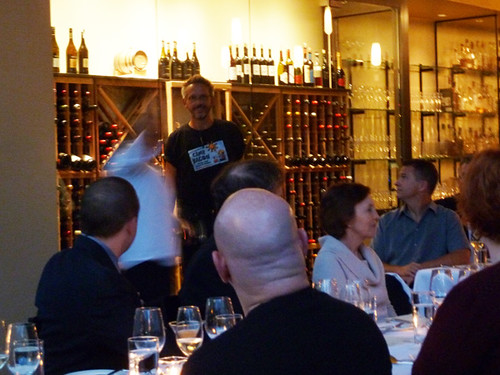
And I’m not just repaying their hospitality when I say this was a fantastic dinner, worth the 3 hours each way. I was a little apprehensive about having salt/baconfat overload, but I should have know that L’Etoile’s Troy Miller would have a delicate touch with bacon, bringing out the flavor of numerous different bacons in delicate, surprising ways:
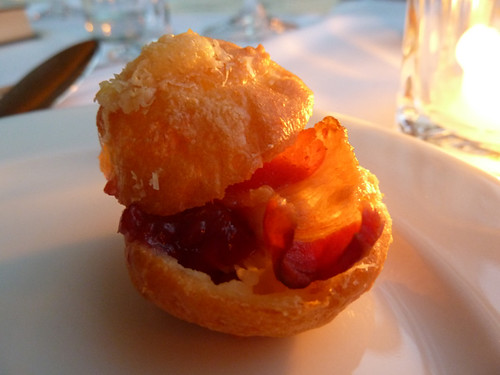
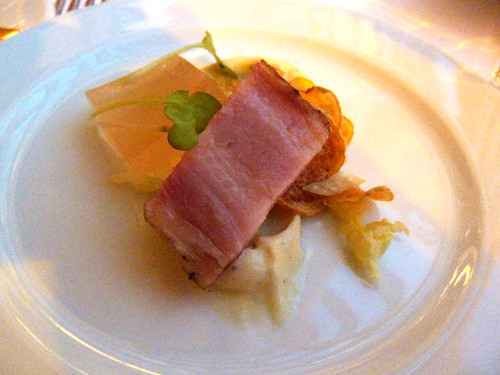
But the other great part of it was that I had the chance to talk with Weinzweig about the prospect of doing a Sky Full of Bacon video at some future date. As I said to him, “Think of some part of your business that you’re fascinated by but no one else seems to be interested in. I’ll be interested in it.” And he was receptive. (In the meantime, this short clip ran on Grub Street.)
So wait, you say, does that mean Sky Full of Bacon is still going? Hell yeh, it’s still going and Key Ingredient comes back this week, too. SFOB is certainly going to be quieter, I’ve tried to do a post a week no matter what, and that won’t happen now. But I’m going to make the next two promised videos on schedule, and there will be something here from time to time.
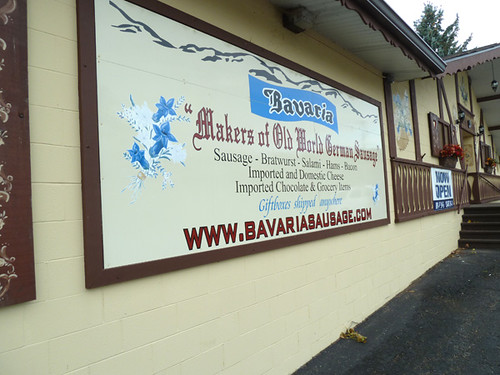
In the meantime I had a couple of suggestions to check out in Madison before I headed home the next day. One was suggested by one of the Milk Board folks, a very tidy and friendly German sausage place, Bavaria Sausage, where I picked up a bunch of really well-made sausages that went happily into a choucroute garnie that very night when I got home. The other was an old-school Italian deli, Fraboni’s, suggested by Matthew, who comments here from time to time. It’s not as impressive as Tenuta’s in Kenosha or Glorioso’s in Milwaukee, but you certainly wouldn’t be sorry you had it nearby, either, and I grabbed a nice sub (could have had better bread, but what was inside was just fine) for the road home.
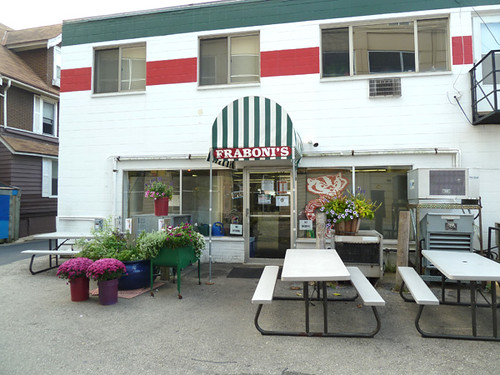
Check me out at my new home, Grub Street Chicago, from now on, and my personal home here, too, at least once in a while when I have something to say or show here.


 Posted in
Posted in 

